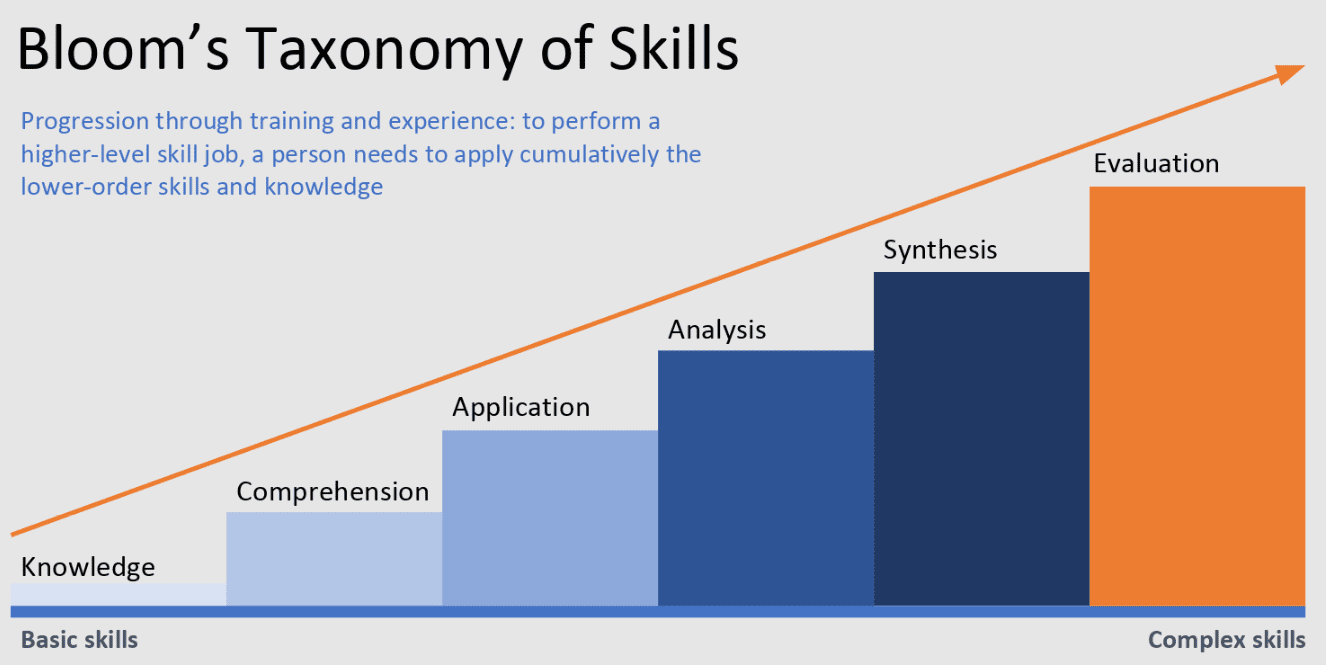One of the top reasons small federal contractors fail is poor business development (BD). You can see the evidence of this in failed Government contracts and lost federal proposals. In our experience, we’ve seen a few key characteristics that keep small Government contractors from maturing their business development processes.
Why does this matter? Because immature BD processes will keep you from consistently winning Government contracts. These characteristics are what we’re going to explore today.
Misalignment of Business Development Skills and Responsibilities
We frequently see misalignment of business development (BD) skills and responsibilities in small, mid-size, and large contracting companies. If you own a federal contracting company with limited resources, you may expect your people to deliver results beyond their skill level and experience. For sustainable success, a business development professional must understand the deliverables at each step of the BD, capture, and proposal management processes.
A business developer must understand what capture and proposal managers need in order to develop a great proposal. Cross-training capture and proposal managers also increase communication, deliverables, and win rates. They must understand each other’s jobs to effectively support one another.
Much of the problem comes from leaders who don’t know what excellent BD professionals and processes look like. A person’s level of experience will determine what they see when they look at a process or product, like a capture plan or proposal.
Example: What The Unexperienced See Vs. The Experienced
Let’s take a look at an example of what the initiated see versus the inexperienced.
First, look at the Marine pictured below. If you’ve never served in the US military, you might assume that this is a battle-ready Marine.
However, an infantry Noncommissioned Officer sees something completely different. This Marine has:
- A ripped helmet cover
- Night vision goggles on during the daytime
- Improper cheek-stock weld
- Weapon is still on safe
- Belt-fed, blank rounds for a weapon that uses a magazine
- And the list goes on
When you’re trained and experienced, these sorts of things leap out at you. If you don’t have the training and skill you need, then you can miss serious mistakes and blunders. When you’re trying to sell a Government customer on your company’s services, you can’t afford to submit your proposal with mistakes none of your staff can see.
Bloom’s Taxonomy of Skills and BD, Capture and Proposal Management
Bloom’s Taxonomy is “a framework for categorizing educational goals.” People progress through the various levels of Bloom’s Taxonomy of Skills via training and experience. In order to perform higher-level skills, you must bring to bear a cumulation of the lower-order skills and knowledge.
Where Are You On Bloom’s Taxonomy for Business Development?
At OST, we find that most business developers, capture and proposal managers, writers, editors, etc. are stuck at one stage. That’s the Application stage. They can take the knowledge they’ve gathered over time and solve problems. However, they only work from the knowledge they already have, which keeps them from developing.
These contracting professionals may have only received on-the-job training, which accounts for the gaps in their knowledge. If they’ve only been employed at one organization then they may have never seen a truly great proposal or capture.
To be effective in BD, a professional needs to continuously move through the stages. At the Analysis stage, you take your previous skills and knowledge to break information into parts, identify patterns, question, and examine aspects of a new situation.
Then comes Synthesizing, in which you build a structure from diverse elements. You bring all the aspects of a proposal together coherently to convince your Government customer to buy from you. As a capture or proposal manager, you need to have those skills.
Finally, at the last stage, Evaluation, you present and defend your ideas against set criteria. With this level of skill, you’ll develop a genuinely great proposal or a new solution for your Government customer.
When you and your BD, capture, and proposal team are higher in Bloom’s Taxonomy of Skill, you’ll experience:
- Higher win rates
- Higher professional recognition
- Pay raises
- Increased self-esteem
- Lower stress
Example: How Useful Are Your Color Team Reviewers?
To illustrate our point, we’ll look at color team reviews. Using color team reviews (Blue, Pink, Red, Gold, White) is a proposal management best practice. We use these color reviews to deliver a mature and outstanding proposal.
Unfortunately, most reviewers are only at the Knowledge and Comprehension stages of Bloom’s Taxonomy, rendering their reviews ineffective. Consequently, they offer up comments that don’t improve the proposal. Comments like:
“We need a comma here.” (Don’t waste time on grammar)
“This doesn’t make sense.” (Vague)
“I don’t understand this.” (Also vague)
“Rewrite this.” (Rewrite it how?)
Writers can’t take action on these sorts of comments. To be an effective reviewer, you must be at the Evaluation stage. Above all, you need to understand what the Government customer wants, what your company is offering (or how it’s being offered in the proposal), and what your company should be offering to win this opportunity.
Reviewers should only provide actionable comments to improve the proposal so the proposal and capture team can incorporate them into the next draft. You need to train your reviewers to set expectations and to hone their reviewing skills.
Related Article: Nine Tips for Conducting Effective Pink and Red Team Reviews for Your Proposals
Who Runs Your Business Development Organization?
As a business owner, how much do you honestly know about Government business development? Business development is really three professions. A business development director manages a portfolio of opportunities and a fully qualified pipeline.
Capture management is more tactical, and capture managers position their company to win multiple opportunities at any given time. Maybe even as many as five opportunities if the capture manager is stellar. Then let’s consider proposal management. Have you ever seen what a really good proposal looks like?
Business Development Considerations for the Business Owner
If you don’t know much about federal business development, then how do you know your personnel is effective? Do you track metrics that would speak to their ability (on inability)? The easiest metric to look at is your win rate (proposals submitted versus proposals won). The average for the Government contracting industry is 33%. Whether your win rate stays above or below 33%, you must always seek to improve.
How beneficial are your hiring processes? Do the people you hire have talent, or do they just sell their resumes (very common in business development)?
Do you expect junior employees to perform senior-level tasks? When small federal contractors first startup, they hire who they can. That usually includes family members. It’s unrealistic to expect friends and family to perform at the level of a professional business developer if that’s not their profession.
So you must continuously develop your own skills. Do you have any BD, capture, or proposal training on your calendar? Have you attended any APMP events recently?
To see all of our articles on federal contractor business development, click here.
Where Can I get Business Development Training?
Here at OST, we genuinely believe quality training is essential for a small Government contractor. So take a look at our Government contracting Bid & Proposal Academy and Blueprint for Federal Business Development. These are the sorts of resources you need to create sustainable business practices for your company.
Finally, think about the biggest mistake you know you’re making with your business development right now. Then click here to send us a message, and we’ll brainstorm solutions with you.
Contact us to learn more.





